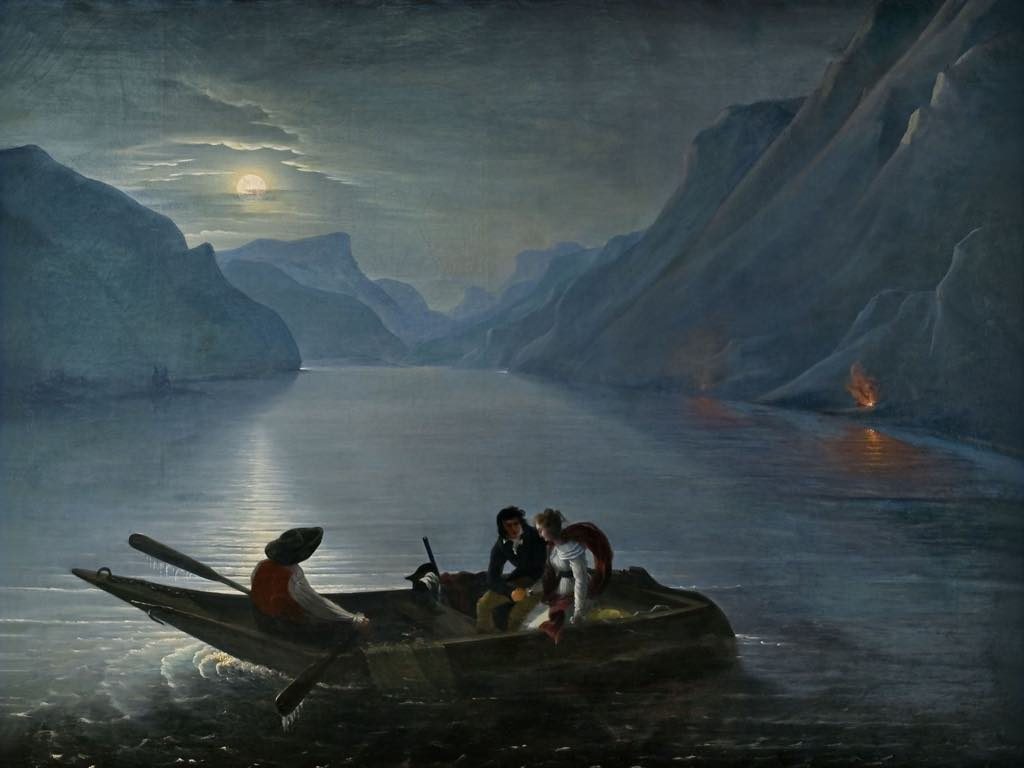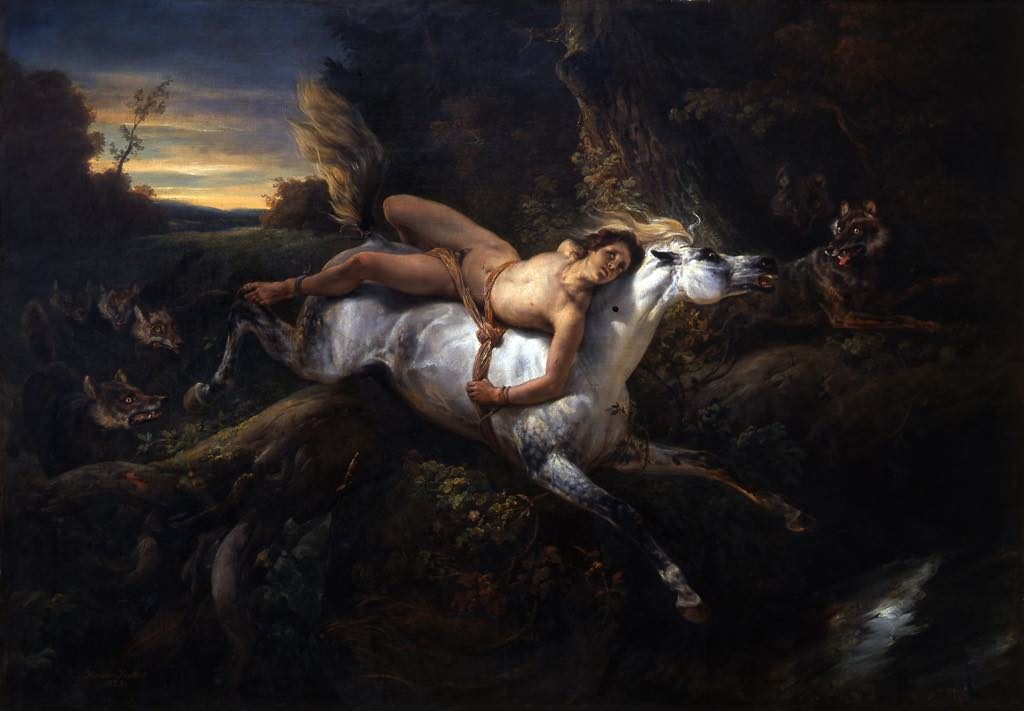
After the fall of Napoleon and his empire in 1815, 19th-century France lived through a series of monarchical restorations and new revolutions, with Paris always at the center of events. The major exhibition “Romantic Paris” at the Petit Palais looks at what was happening in the arts from 1815 to 1848 against the backdrop of this political turbulence, taking a tour around Paris by focusing on different neighborhoods and monuments, beginning with the Tuileries Palace, the pre-Versailles residence of French kings, which was set on fire during the Commune in 1871 and demolished in 1888.
We first get a glimpse of the lifestyle of the conservative post-Empire royal family under Louis XVIII and Charles X (1814/1815–1830) through paintings, furnishings and decorative objects. In matters of clothing, they seem to have eschewed the extravagant tastes of the Ancien Régime: portraits of them in austere black-and-white clothing contrast dramatically with the opulence of Marie Antoinette’s official portraits.
The revival of rococo style in interior decoration at the time, however, resulted in some, to my eye, rather hideous furniture, among them two Louis XV-style armchairs flanked by a pair of outrageously ornate candelabra in the form of a naked woman holding up 10 branches lavishly decorated with gilded vegetation.
The scenography of this exhibition, by the way, is spectacular. The long Palais Royal gallery is one of the most dramatic, with floor-to-ceiling blowups of images of bustling crowds at either end creating the illusion that you are actually in the Palais Royal in the early 19th century.
The chic shopping mall of the day and also the haunt of prostitutes and gamblers in the early 19th century, the Palais Royal is vividly brought to life with dozens of objects that were sold in the galleries (including a collection of gorgeous fans, a crystal flute and some beautiful glassware) and, most interestingly, a long menu from the restaurant Les Trois Frères Provençaux. Many of the dishes listed are still familiar today (“beef-stake” with Madera sauce), while others are more mysterious (“karik à l’indienne”).
We are then treated to a visit to the Salon in the Louvre, an annual juried art show that could make or break an artist’s reputation, with many paintings that made their debut there by such artists as Eugène Delacroix, Jean-Auguste-Dominique Ingres, Anne-Louis Girodet and Horace Vernet (with a highly Romantic rendering of a scene from Byron’s Mazeppa, showing a Polish page being punished for adultery, tied to a horse and chased by wolves), as well as many whose names are less familiar today.
This promenade through 19th-century Paris then takes us to Notre Dame, where we learn how the arts of the Middle Ages were rediscovered at the time thanks to Victor Hugo and his novel The Hunchback of Notre Dame.
The July Revolution of 1830, which unseated Charles X and installed the unpopular Louis-Philippe, brought with it rioting and massacres, illustrated by caricatures by the great Honoré Daumier and a number of paintings and sculptures.
Music is not forgotten, with recordings and scores of Hector Berlioz’s La Symphonie Fantastique (1830), a quintessentially Romantic piece about hopeless love and opium poisoning (Berlioz himself may have been high while composing it).

Bohemian Paris is evoked by paintings and illustrations of the world of artists and street festivals, leading into the section on Nouvelle Athènes, the area in the ninth arrondissement where the Romantic artists of the day lived and worked, among them George Sand, Gustave Moreau, Frederic Chopin and Ary Scheffer. Scheffer’s home and studio are now the site of the Musée de la Vie Romantique, which is currently holding a related exhibition on the literary salons of the same period.
The exhibition ends with a look at the Grands Boulevards, which are rather sad commercial places today but at the time were the height of chic and a nightlife center lined with theaters and restaurants. Portraits of the stars of the day and dramatic scenes bring the area and its ambiance to life, most amusingly in Louis-Léopold Boilly’s painting “The Effect of Melodrama,” in which a young woman swoons, overcome with emotion inspired by a play.
If you have any energy left after seeing this show, head for the basement of the Petit Palais to see how the Romantic. period played out in Germany in the exhibition “Romantic Germany,” a show of drawings from the museums of Weimar, and then on to “Les Salons Littéraires” at the Musée de la Vie Romantique.
“Romantic Paris” is both immersive and impressive, bringing to life not only the upheavals of a turbulent time in French history but also the grace and glamour of the Romantic period.
Favorite


